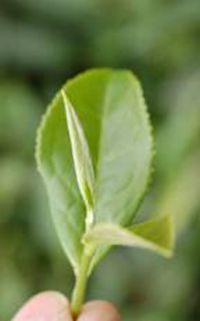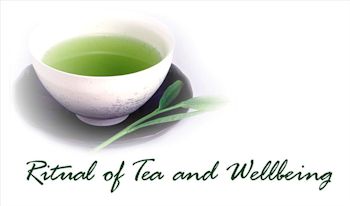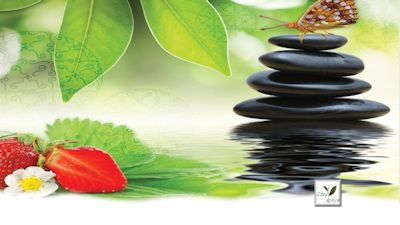Wonder Plant and Restorative Beverage of the Ages
Healing Tea is an ancient beverage steeped in culture and romance. Each day more than a billion cups of tea are consumed making it second only to water. In A.D 780 the famous Tea Master Lu Yu wrote “tea could cure headaches, body aches and pains, constipation and depressions”. Many others believe tea to be beneficial to the skin, eyes, mental clarity, maintaining a youthful appearance and overall prolonging life. In short tea has a long and impressive history as a natural medicine chest or even a life saving plant or healing tea.
Today in North America we are hearing drink green tea for good health, and see tea or tea extracts added into products as an enhancing ingredient. So let’s take a quick look at what tea really is and how it works in the body.
There are more than 5,000 types of tea, but only 1 plant

Types of tea are distinguished by the processing they undergo. Leaves begin to wilt and oxidize if not processed quickly after picking. The leaves turn progressively darker because chlorophyll breaks down and tannins are released. The next step in processing is to stop the oxidation process at a predetermined stage by heating, which deactivates the enzymes responsible. This process although technically is oxidation is often referred to as fermentation in the tea industry, in understanding please use those words interchangeably in classifying teas as you review other authors.
Tea can very generally be classified into three major categories; Green, Black and Oolong there are many other categories but this is the first step in understanding.
- Green tea is the least oxidized and Japanese green tea is most like the actual unprocessed tea leaf
- Oolong sometimes AKA Wu Long is in the middle with many varieties at both ends of oxidation.
- black tea is fully oxidized.
The differences in oxidation gives us distinct flavors and aromas with slight variations in the content of each active ingredient, however all tea contains the same active ingredients in varying degrees:
- Polyphenols
- Caffeine
- Phyto-nutrients
- Amino Acids
- Aromatic Oils
So what are they and what do they work in our bodies?
Polyphenols
Polyphenols are the Antioxidants and include Epicatechin (EC) Epicatechin Gallate (ECG) Epigallocatechin (EGC) and Epigallocatechin Gallate (EGCG) collectively referred to as Catechins. Catechins are antioxidants and work to neutralize free radicals and lower LDL cholesterol levels reducing the risks of many health problems including cancer and heart diseases. Catechins are also helpful with allergic reactions by retarding histamine release. Green tea is the highest in Catechins which is what gives them a more astringent taste. In Black and Oolong teas Catechins transform into Theaflavins and Theorubigins which mimic insulin in the body and therefore can be helpful with diabetes.
Caffeine
Caffeine is the first of the water-soluble components to release, making naturally decaffeinated tea as simple as a 30 second hot water rinse. Caffeine promotes mental alertness, is a diuretic, helps burn fat and stimulates the central nervous system. However too much caffeine tends to make us nervous or even experience nausea. Green tea is generally lower in caffeine than Oolong and Black tea generally has the highest levels, which is still only about half the amount found in most coffees. However tea also has related compounds i.e. Theobromine, Theophyline and L-theanine that work in conjunction with caffeine resulting in a more relaxed yet alert feeling to the body as they help to regulate over stimulation. Coffee contains caffeine but NONE of the related compounds which may explain why tea has a longer and more pleasant affect on the body and has been used by monks in Asia for over 5 thousand years in support of long meditation sessions.
Phyto-nutrients
The term phyto originated from a Greek word meaning plant. Phyto-nutrients are certain organic components of plants, and these components are thought to promote human health. How phyto-nutrients work in the body is an ongoing area of research, however some studies show they stimulate detoxification enzymes, stimulate the immune system, act as antibacterial or antiviral agents and positively affect hormones.
Amino Acids
L-theanine represents more than 50% of the amino acids found in tea. It remains unaltered only in non-oxidized leaves and so highest in Japanese Teas. L-theanine breaks down in the body and primes the response of an immune system element called the gamma-delta T cell. Some studies show gamma-delta T cells in the blood to be the first line of defense against many types of bacteria, viral, fungal and parasitic infections. L-theanine also promotes the formation of the neurotransmitter dopamine, and increases the alpha-waves in the brain. It can relax us, improve memory and work to repair the cranial vascular system assisting in the prevention of dementia. The high levels of L-theanine found in green tea is what gives it a mild sweet taste.
Aromatic Oils
There are hundreds of volatile oils found in the tea leaf contributing to its’ complex fragrance and taste. The Oils accumulate as the tea leaf is growing and will differ due to soil, climate, and seasonality. Some of the oils begin to evaporate during and after the harvesting while the processing of leaves can contribute to the formation of other aromatic oils that remain in the finished tea. Larger leafs tend to hold more aroma while finely cut leaves often found in teabags may have little or no natural fragrance remaining.
In the easy to read, information packed book “The Green Tea Book the science-backed miracle cure” PH.D Lester Mitscher and MPH Victoria Dolby Toews state:
- Drinking any amount of tea regularly makes it 40 percent more likely that a person who has a heart attack will survive and will be alive three years later.
- One to two cups daily lowers the risk of severe hardening of the arteries (atherosclerosis) by 46 percent.
- Two cups a day leads to a 50 percent reduction in heart disease in general.
- Three cups daily slashes the risk of having a heart attack by 43 percent.
- Three cups a day lowers LDL (“bad”) cholesterol levels.
- Four cups a day greatly lowers the risk of skin cancer.
- Five cups daily lowers stroke risk by 62 percent in women and 42 percent in men.
- Five cups a day reduces the chances of developing breast cancer.
The story continues to develop as new research is done everyday but, clearly it appears tea can’t hurt and could possibly be the answer to WHY every culture for thousands of years has used this single plant tea to improve health and wellness and considered this plant healing tea.

To view the most recently published studies published by the World Green Tea Association of Japan as well as the International Scientific Symposium on Tea and Human Health visit the Tea Docents website at http://www.chadoen.com








